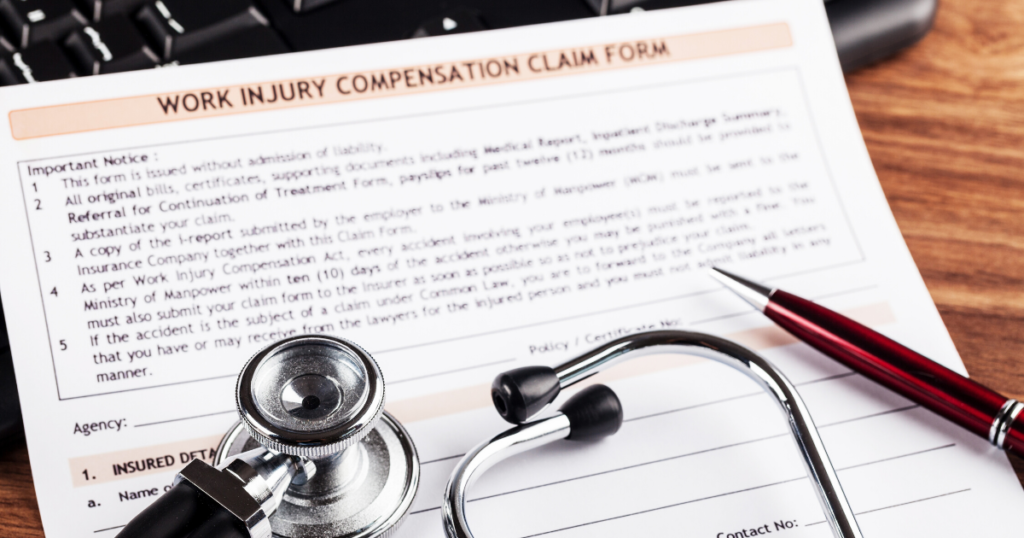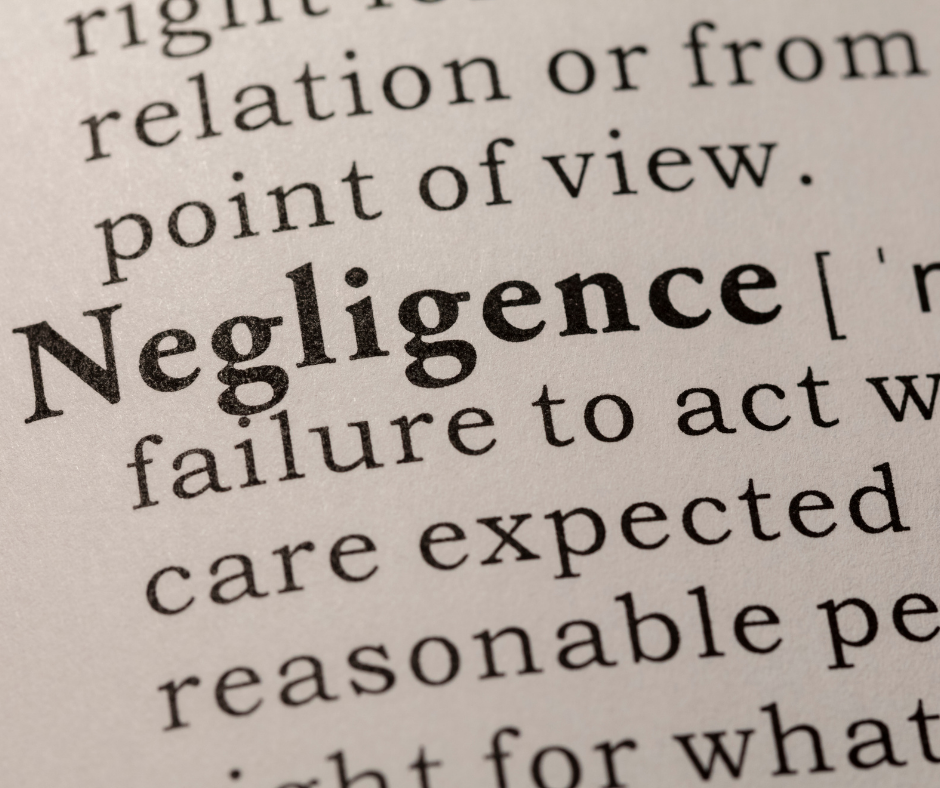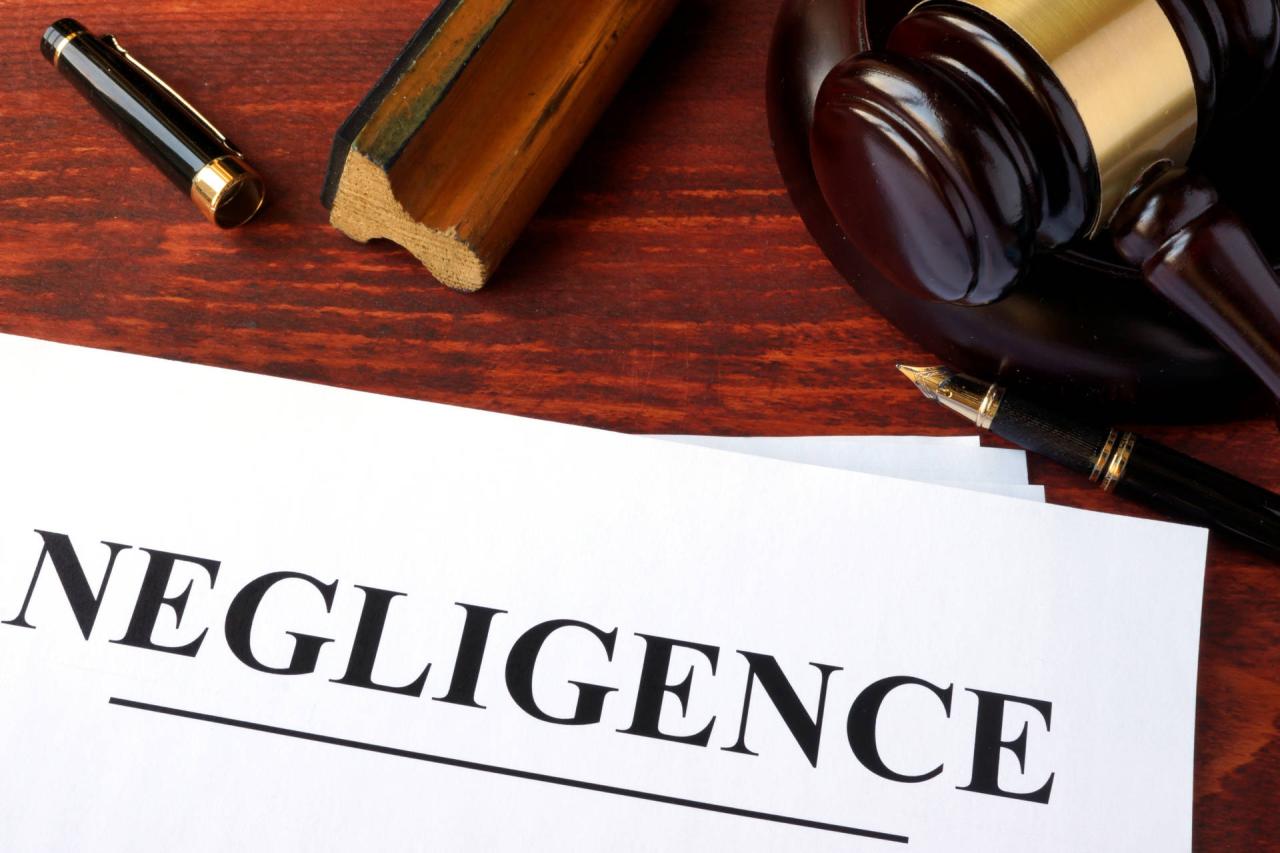Employer Negligence: Proving Fault in Workplace Accidents explores the critical legal and ethical considerations surrounding workplace injuries. This examination delves into the complexities of establishing employer liability, analyzing the elements of negligence, common causes of accidents, and the strategies for proving fault. We will investigate the various types of evidence admissible in court, the role of expert witnesses, and the potential consequences for employers found negligent.
Finally, we will explore remedies available to injured employees and examine real-world case studies to illustrate these principles.
Understanding employer negligence is crucial for both employers and employees. Employers must ensure a safe working environment, adhering to regulations and providing adequate training and equipment. Employees, in turn, need to know their rights and how to pursue compensation if injured due to their employer’s negligence. This exploration will provide a comprehensive overview of the legal landscape, empowering both parties with the knowledge to navigate these challenging situations.
Employer Negligence in Workplace Accidents

Workplace accidents can have devastating consequences, impacting not only the injured employee but also their families and the employer. Understanding employer negligence is crucial for preventing these incidents and ensuring accountability when they occur. This article explores the various facets of employer negligence in workplace accidents, from defining the concept and identifying common causes to proving fault and understanding the legal ramifications.
Defining Employer Negligence in Workplace Accidents
Employer negligence in the context of workplace accidents refers to a failure by an employer to exercise reasonable care for the safety and well-being of their employees, resulting in an injury or illness. This differs from employee negligence, which involves an employee’s own carelessness contributing to their injury. To establish employer negligence, several legal elements must be proven.
These elements typically include a duty of care owed by the employer, a breach of that duty, causation (a direct link between the breach and the injury), and damages (actual harm suffered by the employee).
| Element | Explanation | Example | Legal Precedent (Illustrative) |
|---|---|---|---|
| Duty of Care | The legal obligation of an employer to take reasonable steps to ensure the safety of their employees. | Providing adequate safety training and equipment. | (Example case 1: A hypothetical case involving a construction company failing to provide appropriate fall protection.) |
| Breach of Duty | Failure to fulfill the duty of care owed to the employee. | Failing to provide safety training on operating machinery. | (Example case 2: A manufacturing plant neglecting regular maintenance on machinery, leading to a malfunction.) |
| Causation | A direct link between the employer’s breach of duty and the employee’s injury. | An employee injured due to malfunctioning machinery because of lack of maintenance. | (Example case 3: A retail store failing to address a known hazard like a slippery floor, resulting in a customer injury. While not strictly employee injury, it illustrates the principle of causation.) |
| Damages | The actual harm suffered by the employee as a result of the accident. | Medical bills, lost wages, pain and suffering. | (General principles of tort law apply across jurisdictions; specific cases would vary by jurisdiction.) |
The duty of care owed by employers is a broad responsibility encompassing various aspects of workplace safety, including providing a safe working environment, adequate training, proper equipment, and enforcing safety regulations.
Establishing employer negligence in workplace accidents requires demonstrating a breach of duty of care. This often involves proving the employer knew or should have known of a hazard and failed to take reasonable steps to mitigate the risk. Similar principles apply in personal injury cases, such as those detailed in this helpful guide on How to File a Car Accident Claim with an Attorney’s Help , where establishing fault is crucial for a successful claim.
Successfully proving employer negligence, like proving fault in a car accident, hinges on meticulous evidence gathering and legal expertise.
Common Causes of Employer Negligence Leading to Workplace Accidents

Several common scenarios illustrate employer negligence leading to workplace accidents. These scenarios highlight the critical role employers play in ensuring a safe work environment.
- Inadequate Safety Training: Failure to provide comprehensive and regular safety training, leading to employee errors and accidents.
- Lack of Proper Safety Equipment: Not supplying employees with necessary personal protective equipment (PPE) or ensuring its proper use.
- Failure to Enforce Safety Regulations: Ignoring or not actively enforcing established safety rules and procedures.
- Poor Workplace Maintenance: Neglecting necessary repairs and maintenance of equipment and facilities, creating hazardous conditions.
- Inadequate Supervision: Insufficient supervision of employees, especially in high-risk environments.
For instance, inadequate training on the operation of heavy machinery can lead to serious injuries. Similarly, a failure to provide and maintain proper safety equipment, such as hard hats or safety harnesses, can result in fatal accidents. The consequences of these failures can range from minor injuries to fatalities and significant legal liabilities for the employer.
Failing to provide proper safety equipment directly exposes employees to hazards, while failing to enforce safety regulations allows unsafe practices to persist, both contributing to accidents. The impact of the former is more immediate and physically apparent, while the latter’s impact is more gradual but can be equally devastating in the long run.
Proving Fault: Evidence and Legal Strategies
Establishing employer negligence requires presenting compelling evidence to support the claim. Various types of evidence can be crucial in building a strong case.
Establishing employer negligence in workplace accidents requires demonstrating a breach of duty of care. Similar principles of fault allocation apply in other contexts; for instance, understanding how shared responsibility impacts outcomes is crucial, as explained in this helpful resource on Understanding Comparative Negligence in Car Accident Cases. This understanding of comparative negligence can provide valuable insight into how courts assess fault, which is directly relevant to proving employer negligence and securing appropriate compensation for workplace injuries.
| Type of Expert | Their Role | Example of Testimony |
|---|---|---|
| Safety Engineer | To assess the adequacy of safety measures implemented by the employer. | “The lack of guardrails on the platform constituted a clear violation of OSHA standards and directly contributed to the accident.” |
| Medical Doctor | To determine the extent and nature of the employee’s injuries and their long-term effects. | “The employee sustained a severe back injury that will likely require ongoing physical therapy and limit their future work capacity.” |
| Accident Reconstructionist | To analyze the accident scene and determine the sequence of events leading to the injury. | “Based on the analysis of the skid marks and witness statements, the accident was most likely caused by the failure of the braking system.” |
Expert witnesses play a vital role in explaining complex technical aspects of the accident and establishing a link between the employer’s negligence and the employee’s injuries. Legal strategies for building a strong case involve meticulous investigation, gathering comprehensive evidence, and presenting a clear and persuasive narrative of the events leading to the accident.
Specific Types of Workplace Accidents and Negligence
Employer negligence manifests differently across various types of workplace accidents.
Slips, Trips, and Falls: Negligence in this area could involve failure to maintain clean and dry floors, inadequate lighting, or the absence of proper handrails. Preventative measures include regular cleaning, sufficient lighting, and installation of handrails on stairs and ramps.
| Type of Equipment Malfunction | Negligent Employer Actions |
|---|---|
| Defective Machinery | Failure to conduct regular inspections and maintenance, ignoring previous warnings of malfunctions. |
| Unsafe Tools | Providing employees with worn-out or damaged tools without replacement, failing to train employees on proper tool usage. |
| Faulty Electrical Systems | Ignoring reported electrical hazards, failing to conduct regular electrical safety inspections. |
Repetitive Strain Injuries (RSI): Proving negligence in RSI cases can be challenging, requiring evidence demonstrating that the employer knew or should have known about the risks associated with repetitive tasks and failed to take adequate preventative measures. This may involve showing inadequate ergonomic assessments, lack of training on proper posture and work techniques, or ignoring employee complaints of pain.
Impact of Employer Negligence: Consequences and Remedies, Employer Negligence: Proving Fault in Workplace Accidents

The consequences of employer negligence can be severe, impacting both the employer and the injured employee.
Establishing employer negligence in workplace accidents requires meticulous documentation of safety violations and causal links to the injury. Similar attention to detail is crucial when pursuing personal injury claims, as evidenced by the common pitfalls outlined in this helpful resource on Common Mistakes People Make When Filing Car Accident Claims. Understanding these errors can help you avoid similar missteps when building a strong case for workplace negligence, ensuring a more effective claim process.
Employers face financial penalties, including substantial legal costs, workers’ compensation payments, and potential fines from regulatory bodies. Reputational damage can also result, affecting future business prospects. Legally, employers can face lawsuits, leading to significant financial liabilities and even criminal charges in cases of gross negligence.
Injured employees are entitled to various remedies, including workers’ compensation benefits (covering medical expenses and lost wages), additional compensation for pain and suffering, and legal fees. The severity of the injury directly impacts the compensation awarded; more severe injuries naturally result in higher compensation amounts.
Illustrative Case Studies
Hypothetical Case Study: A construction worker, John, fell from a scaffold due to missing guardrails. The employer, ABC Construction, had failed to conduct regular safety inspections and ignored previous employee complaints about the scaffold’s condition. Evidence included witness testimonies, photos of the damaged scaffold, and expert testimony confirming the violation of safety regulations. The court ruled in favor of John, awarding him significant compensation for his injuries and medical expenses.
Establishing employer negligence in workplace accidents requires demonstrating a breach of duty of care. Similar principles apply to car accident claims, where proving fault is crucial for compensation; understanding this process is vital, as detailed in The Role of an Attorney in Getting Maximum Compensation for Car Accidents. Successfully navigating these legal complexities, whether in workplace or vehicular accidents, often necessitates expert legal representation to secure fair compensation.
Accident Scene Description: The accident occurred on a construction site. A scaffold, approximately 10 meters high, lacked guardrails on one side. Scattered tools and debris were visible at the base of the scaffold. John’s toolbox lay near the base, suggesting a fall from the scaffold. The scaffold itself showed signs of wear and tear, indicating a lack of proper maintenance.
Real-World Case Summary (Illustrative): A case involving a factory worker who suffered a severe hand injury due to malfunctioning machinery. The employer’s failure to provide adequate safety training and maintain the equipment contributed to the accident. The court found the employer negligent and awarded the worker substantial compensation.
In conclusion, proving employer negligence in workplace accidents requires a thorough understanding of legal principles, evidence gathering, and strategic legal approaches. Establishing a duty of care, breach of that duty, causation, and damages are essential elements. While the process can be complex, employees have recourse through various legal avenues to seek compensation for injuries sustained due to their employer’s negligence.
Employers, on the other hand, have a moral and legal obligation to maintain safe working conditions to prevent accidents and mitigate potential liabilities. A proactive approach to safety, coupled with robust training and adherence to regulations, is paramount in fostering a secure and productive work environment for all.
FAQ Explained: Employer Negligence: Proving Fault In Workplace Accidents
What constitutes a “safe working environment” legally?
A “safe working environment” is defined by relevant occupational safety and health regulations, industry best practices, and a reasonable standard of care to prevent foreseeable hazards. This includes providing adequate training, safety equipment, and a properly maintained worksite.
What if I was partially at fault for my workplace accident?
In many jurisdictions, comparative negligence principles apply. This means your compensation may be reduced proportionally to your degree of fault. However, even with partial fault, you may still be entitled to some compensation.
How long do I have to file a claim for a workplace accident?
Statutes of limitations vary by jurisdiction and type of claim. It’s crucial to consult with a legal professional immediately after an accident to understand applicable deadlines.
Establishing employer negligence in workplace accidents requires strong evidence demonstrating a breach of duty of care. This often involves similar evidentiary requirements to other negligence claims, such as gathering witness statements and medical records. For example, understanding the necessary evidence for a successful personal injury claim, like those detailed in this helpful guide on What Evidence Do You Need for a Successful Car Accident Claim , can provide valuable insight.
Ultimately, proving fault hinges on demonstrating a direct link between the employer’s negligence and the employee’s injury.
What types of damages can I claim?
Damages can include medical expenses, lost wages, pain and suffering, and potentially punitive damages in cases of gross negligence. The specific damages awarded depend on the severity of the injury and the jurisdiction.

